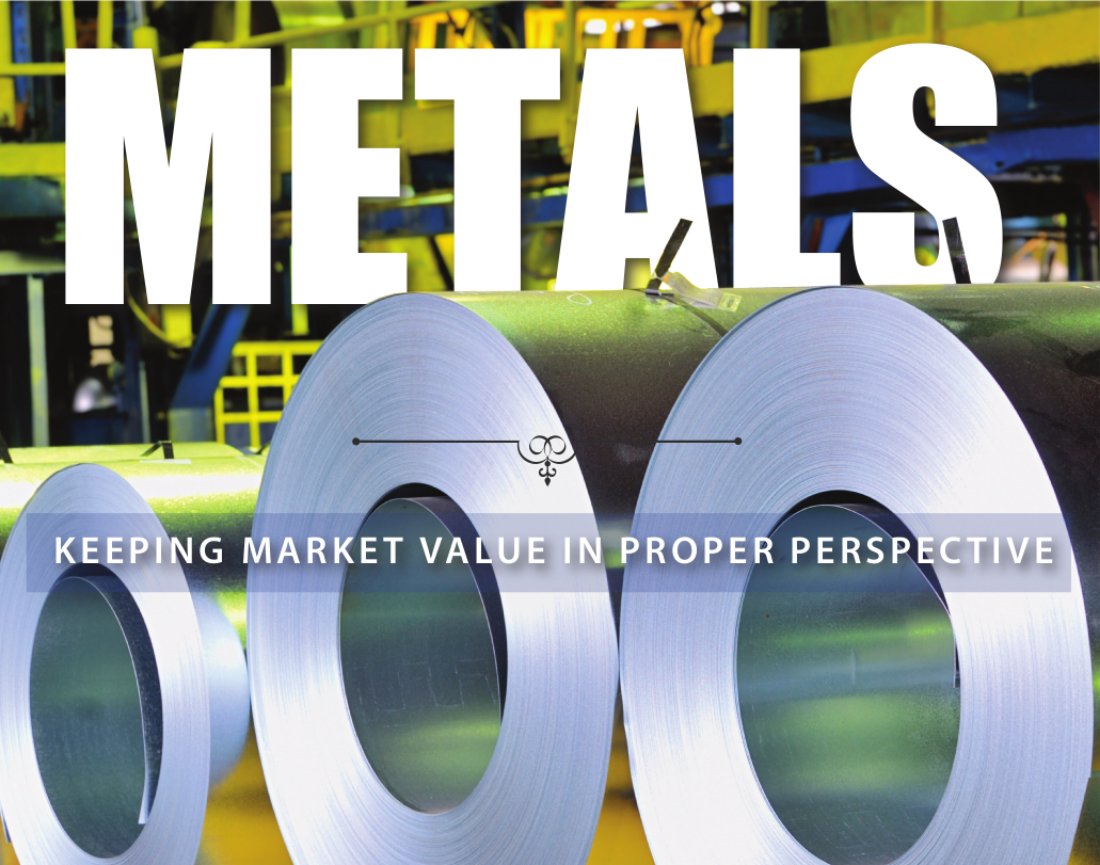
For just about anybody in the business world, the term “metals” immediately calls to mind the fast-paced trading action of places like the London Metals Exchange, where fortunes rise and fall each day based on the flux in demand for aluminum, zinc, nickel, tin and a host of other metals. As a former metals analyst, I can attest to the fact that a veritable army of experts works 60-hour weeks mulling all of the many nuances of the global metals and commodities markets. These obsessive traders are laser-focused on where the market is headed. Some have spent decades scanning headlines and poring over white papers and quarterly reports in an effort to hone their predictive powers.
Naturally, when secured lenders work with borrowers that are heavily invested in metals-related inventories, they often feel a strong inclination to bring in experts of this sort. But maintaining a single-minded focus on commodity prices is not necessarily as valuable to lenders as one might think. To bring an appraisal to life, the team must employ a multi-dimensional analysis grounded in a thorough understanding of all variables that can affect collateral value for the life of the loan.
To be sure, there may be situations in which the collateral in question actually is a raw material in commoditized or quasi-commoditized form — ingots of aluminum in a vault or gaylords of copper in a scrap yard. In such cases, the liquidation value and market value are one in the same, and so an appraisal might not be required. But more often than not, value has been added to that collateral somewhere down the line — e.g., the steel has been split into a coil or contains chemicals for a specific use. For most metals-related collateral, then, a single data point — the value of the metal at the close of the market on a given day — hardly comes close to telling the whole story.
For the lender, the goal should be to reconcile the publicly available market indices with the collateral value, i.e., the NOLV provided by an appraiser. The onus of educating the lender both at the time of the appraisal and, most importantly, moving forward, is on the appraiser. The service the appraiser provides should include full transparency of methods used, indices relied upon, and the details used to arrive at a given value. By gaining a solid understanding of the process employed in arriving at a given liquidation value, lenders invariably get a clearer idea of how market fluctuations affect the GOLV. In the metals sector in particular, these details will vary depending on where that borrower happens to be in the supply chain. Is the company a scrap yard or mill with relatively commoditized inventories? Is it a service center that adds value in simple ways like slitting coils or cutting bars? Or does the company alter the collateral through a multistep, value-add process, which can sometimes reduce the potential GOLV? How does the appraiser account for supply-chain value? Is the borrower the sole supplier of a particular part or is that part available from multiple competitors?
Much scrutiny must also go into precisely what methodologies borrowers use to assign value to inventories, because the overall goal is to understand how the market value relates to GOLV, and how GOLV relates to inventory cost. In this regard, the details and dynamics at every company will be different. It is good to know that the borrower is using, for instance, a FIFO average actual cost methodology. But other questions should be asked. For example, how quickly does the overall inventory turn? How quickly does each individual item turn, on average? Even within the same company, different items often have different lags—and that means different relationships to the market.
In a thorough appraisal, the firm will take some time—typically a minimum of three weeks — to ask questions and inspect the inventory and operations. During this period, the commodities markets will continue to fluctuate, but the appraiser will eventually be forced to pick a day and provide the report based on a given market value at the close of trade. Indeed, real-world liquidation expertise can be far more important than the ability to make predictions about where the market might be headed. Can the firm paint a clear picture of hiccups that might arise when executing the liquidation strategy? Does the team have a solid grasp of how customer, creditor and employee relationships ought to be managed? Operationally, how would the firm plan to approach facilities and other assets during a wind down?
The allure of expertise in the headline-grabbing metals and commodities markets can sometimes serve as a bit of a distraction for lenders. Is the future market value of a given metal likely to be an important factor? Absolutely. But for most appraisals of metals-related collateral, market value is just one variable in a complex, multivariate equation.



